Beyond ChatGPT: How AI Is Transforming Fitness & Human Performance
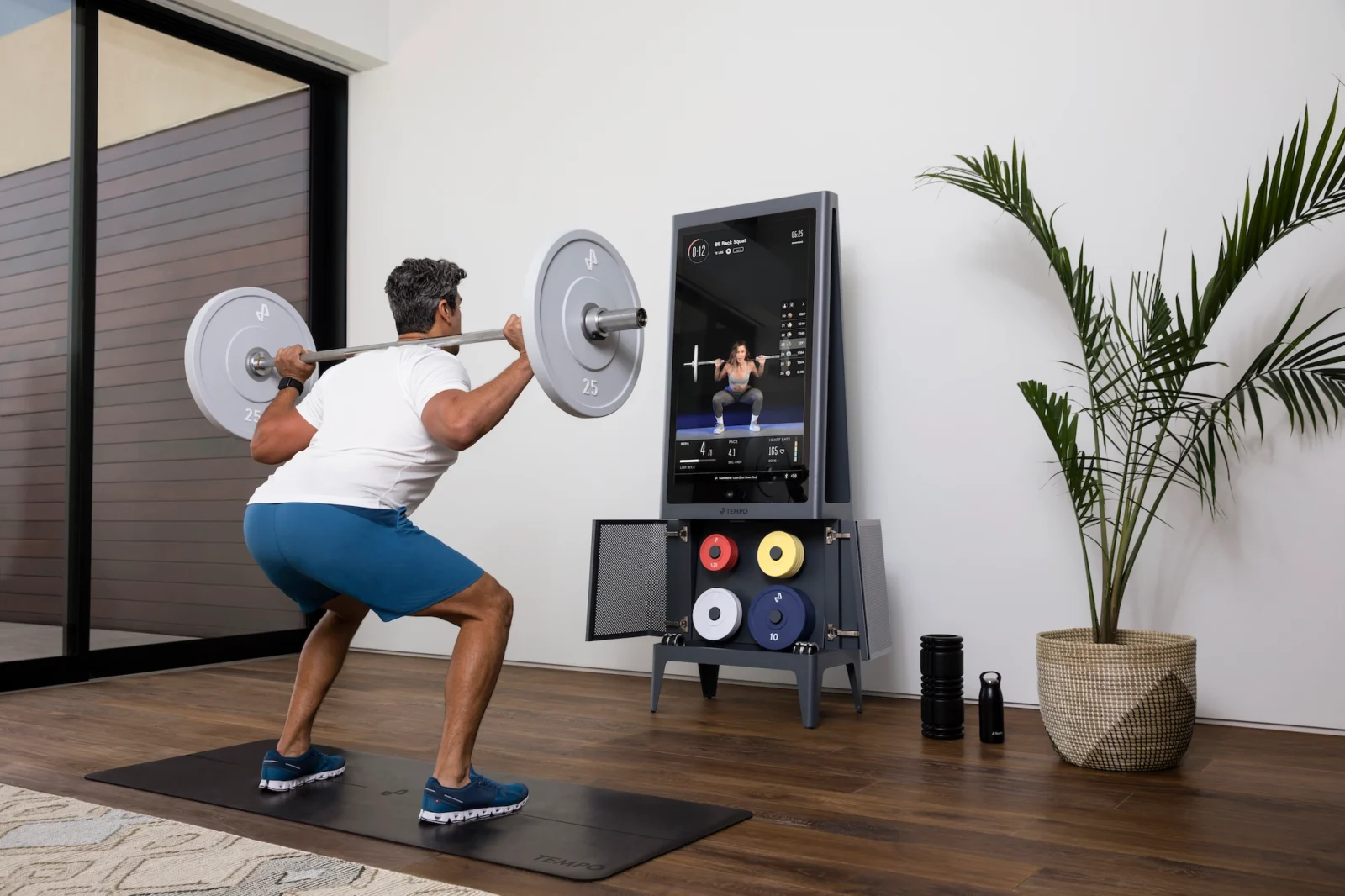
These innovative companies are using AI to disrupt health and fitness in creative ways
Artificial intelligence has thrust itself into the mainstream in recent months, as tools like ChatGPT have made their way into the hands of the masses and sparked a media frenzy.
In the fitness industry, AI has become something of a buzzword, resulting in varying levels of unbridled enthusiasm, cautious optimism, apprehension and downright fear depending on whom you ask.
New direct-to-consumer apps pop up seemingly every day touting their plans to leverage the transformational powers of AI and machine learning to improve areas like coaching, motivation, nutrition and mental health. Software providers, meanwhile, are announcing plans to use AI to help gyms and studios find new customers and keep their current ones from leaving.
While most in the industry seem to agree that ChatGPT by itself isn’t going to make the personal trainer obsolete, there are companies in the fitness space working on more advanced AI projects that, if taken to their logical conclusions, could do just that.
At the same time, other firms are employing AI with the goal of making personal trainers better, equipping fitness coaches with improved insights into the human body and enhanced capabilities to do their jobs.
While it’s still early, here’s a look at how a few innovative companies are using AI to disrupt the health and fitness space.
Tempo Wants To Build the ‘World’s Best Personal Trainer’
Tempo co-founder and CEO Moawia Eldeeb got introduced to fitness as a homeless teenager, learning the ropes from personal trainers at his local YMCA who let him workout for free in exchange for a promise: he had to finish high school.
That arrangement paid off in more ways than one. Eldeeb discovered his lifelong passion in fitness and would go on to study computer science at the prestigious Columbia University.
As a college student who was training clients on the side to pay his bills for school, Eldeeb didn’t have to wrack his brain too hard to figure out what he wanted to do with his Ivy League degree.
“How can I build the world’s best personal trainer ever, and then make it affordable, so I can get it into the hands of as many people as possible,” Eldeeb says of why he started an AI-powered fitness company.
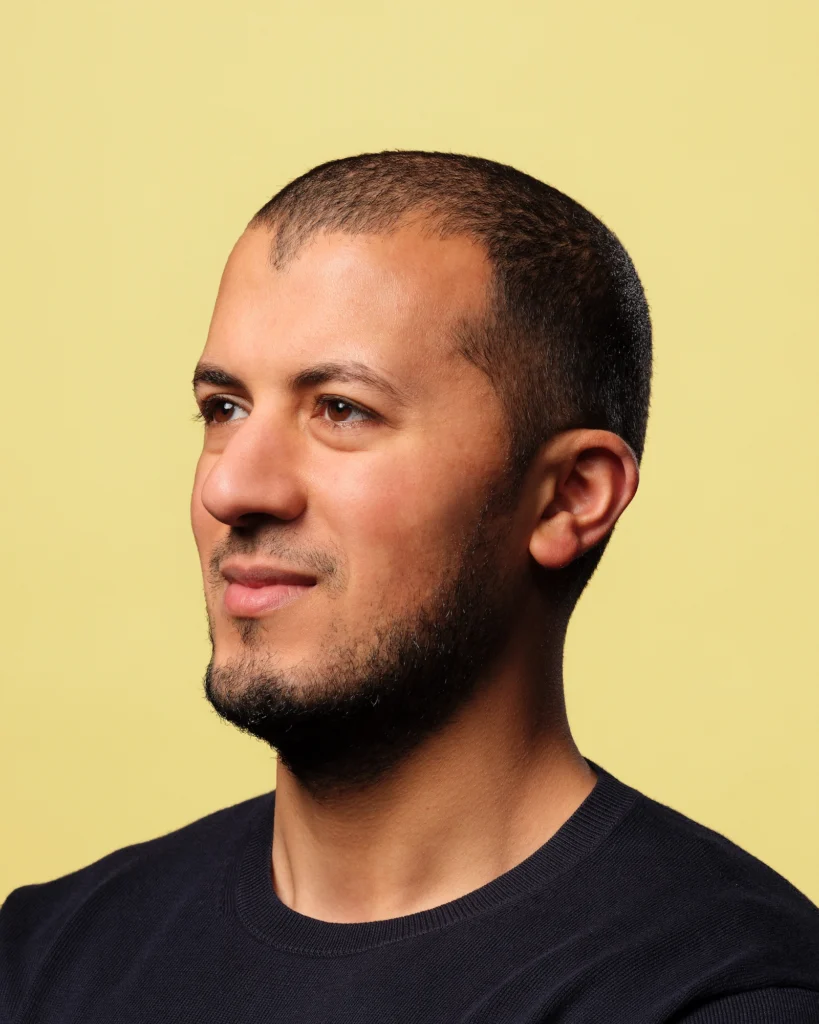
The result: Tempo, a smart home gym system that uses AI and machine learning to help people strength train with proper form while using personalized workout routines.
From the consumer’s perspective, the Tempo system is pretty simple: users receive a set of smart weights – dumbbells and a barbell – that are tracked by AI-powered sensors. The sensors track the way your body moves during various exercises, allowing Tempo to deliver real-time feedback on form.
Tempo can also track how fast you’re moving the weight, which helps the system decide if you’re going too light or too heavy.
“It constantly gives you the optimal weight,” Eldeeb says.”If you’re pushing at a certain speed, we know that weight is too light for you, for example.”
The science powering Tempo’s AI, however, is anything but simple. Over five-plus years, Eldeeb and his team placed 3D cameras in gyms around the globe to collect thousands of hours of video of people performing various strength-training exercises.
It was a long and laborious process, but by 2020, Tempo had enough confidence in its AI model’s ability to diagnose and correct people’s form that the company officially launched its smart home gym product to the public.
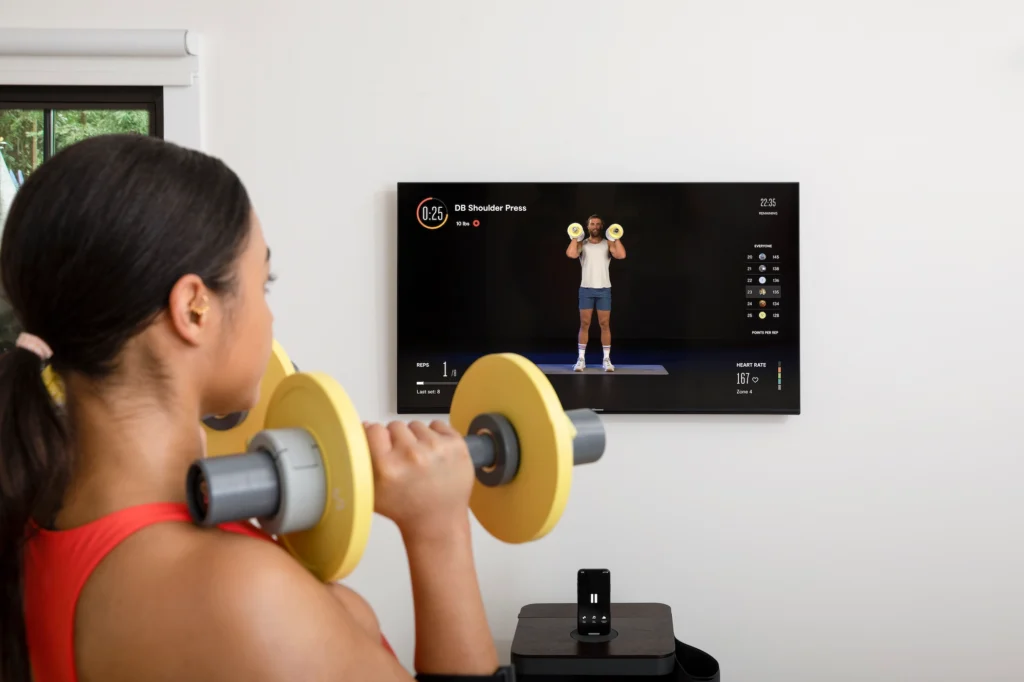
Eldeeb doesn’t view owning a Tempo and going to a physical gym as mutually exclusive – he says the AI-powered at-home fitness company is well-suited to the growing number of people who prefer a hybrid approach to working out. But he says working out at home, with Tempo, offers some important performance benefits.
“Gyms can have a lot of problems. You’re often waiting for weights to become available, which means you can’t be very efficient,” Eldeeb explains. “At home, the whole weight set is yours, you can change the weights quickly and move from exercise to exercise.”
In 2021, the company received $220 million in Series C funding to help it scale. That same year, Tempo introduced Move for $395, giving users a lower-priced option to its original Studio product, which retailed for over $2,000 but currently sells for $1,695. The next year, Tempo released an even cheaper product, Core, which currently sells for just $245.
“That was always the goal, build the world’s best personal trainer, but also make it affordable so everyone can access it,” Eldeeb says.
In June, Tempo rolled out new features that Eldeeb believes make the AI-powered system better than any human personal trainer ever could be.
Tempo can now leverage biometric data like VO2 max, heart rate and heart rate variability (HRV) to prescribe workout plans that are custom-made to how your body is feeling on a particular day.
Tempo’s AI model also figures out how your body responds to different exercises, rep ranges and rest periods, and then prescribes a workout routine that’s tailored to those findings.
“We call these dynamic training plans,” Eldeeb explains. “They keep adapting, so every week you’re working out (with Tempo) is a smarter, more effective week for you.”
Tempo further leverages biometric data to make in-workout adjustments to your training plan. For example, Eldeeb says the system can analyze your heart rate and tell you whether you should be pushing it harder or dialing it back during that session.
Eldeeb sums up his confidence in Tempo’s ability to deliver the ultimate personal training experience rather succinctly.
“Give us 30 minutes and we’ll give you the best workout of your life,” he says. “And it happens every day.”
Asensei Uses AI To Capture Movement
If the success of a company like Tempo spells bad news for personal trainers – and potentially the gyms they work for – the way asensei uses AI should be more reassuring for traditional fitness industry players.
Co-founded in 2014 by tech entrepreneur and karate coach Steven Webster, asensei creates software that allows health and fitness companies to motion-capture customers while they’re working out, whether at home or in-facility.
Powered by 3D computer vision, Asensei’s motion-capture software opens up a host of intriguing possibilities for the creative gym or studio, including increased personalization. That’s because in addition to just capturing motion, asensei uses AI to provide real-time coaching feedback on the movement it captures.
“Asensei doesn’t just classify what you’re doing, but understands how it should be performed,” Webster says.
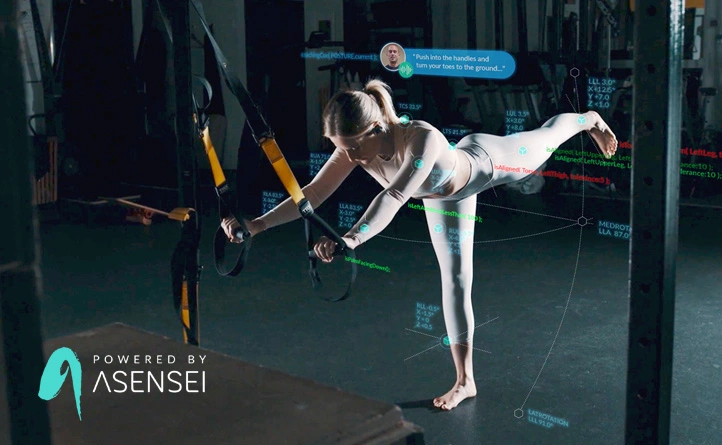
Gyms and studios can utilize motion-capture to create what asensei calls a “smart warm-up” experience.
“You can be warming up in the gym or studio, and somewhat unbeknownst to you, asensei technology is recognizing the exercise you’re doing,” Webster explains. “If you’re doing a squat, at specific moments in that exercise, like the bottom of the squat, we’re measuring things like your hip flexion, your knee flexion, your torso position.”
Connected fitness companies can use asensei’s instructional learning feature as a way to onboard new members and make sure they know how to perform movements safely on a new machine.
Another asensei solution is “real-time coaching,” which provides immediate feedback on form. For those using the technology at home, they could interface with a coach in VR who would be giving them feedback on how they can improve their form on a particular exercise or movement.
In the studio, asensei’s real-time coaching insights would be routed to the instructor leading a group fitness class. The instructor then has the discretion to meet with individual students to discuss their form.
“Imagine you’ve gone to a rowing class and you’re one of 20 people in a dark room with music. The instructor can’t see you, and you’re rowing incorrectly. You’re going to go home sore and probably having not enjoyed the class very much,” Webster explains. “But if asensei sees that, asensei can route that to the instructor on the floor and say, ‘Steven on Erg number four, this is the mistake he’s making, remember to tell him to push not pull, use his legs rather than his arms.’ And the coach can walk over and give that instruction.”
For gyms, Webster envisions a world where asensei technology is used in an entire connected fitness room. In the room, members can have their entire workouts digitally tracked, including sets and reps, as well as receive feedback on their form.
Personal trainers can monitor the connected fitness room and offer guidance to members struggling with their form.
“You could imagine an experience where you’re just doing your gym workout, and then all of a sudden, a personal trainer walks over to you and says, ‘Hey, I’ve noticed you could use a little help on your kettlebell swing. Can I teach that to you for a moment?’”
Asensei technology can be used for a lot more than just teaching proper form though, Webster notes.
“Imagine walking into a boutique fitness studio, and at the end of your workout, instead of just getting an email with what heart rate zones you’re in, now it tells you, you did x reps of this exercise and y reps of that exercise, or you were in the top three in the class for this segment of the workout.”
Asensei is currently piloting the room-scale version of its motion-capture technology with brick-and-mortar gyms, boutique fitness studios and Division 1 college sports teams.
“Our pilot program offers these customers the opportunity to inform the priorities of the final solutions,” Webster says. “The solutions are typically room-scale implementations of solutions we’re already delivering in an at-home environment.”
Zone7 Is at the Vanguard of Human Performance
An important and often overlooked part of training smarter is injury prevention. You can have the greatest workout plan in the world and the best tech guiding your form, but it’s all for naught if you’re physically unable to perform.
AI can help there, too.
Zone7, an AI platform designed to reduce injury risk and optimize performance in athletes, is laying the groundwork for what could become the next wave in human performance.
The Silicon Valley company has worked with teams from Europe’s top soccer leagues, as well as with the NFL and the NCAA, to give coaches and medical staffs the information they need to lower the risk of injury to their players.
Zone7 notably worked with Liverpool FC during the 2021-22 season, helping the English Premier League club reduce by more than one-third the number of days it lost to injury compared to the previous season despite playing more matches than just about any other club on the planet.
Zone7’s founder, Tal Brown, says the way his company is using AI to mitigate the risk of injury in pro athletes – and the vast amounts of data it’s collecting on player health and performance – is applicable to health and fitness.
“What we do now has an immediate crossover to the weekend warrior community, or folks who are closer to pro on the training regime,” Brown says. “Over time we hope to take that to the broader fitness community.”
The biggest hurdle to using AI to help everyday people mitigate their risk of injury while working out is getting enough quality data, Brown says.
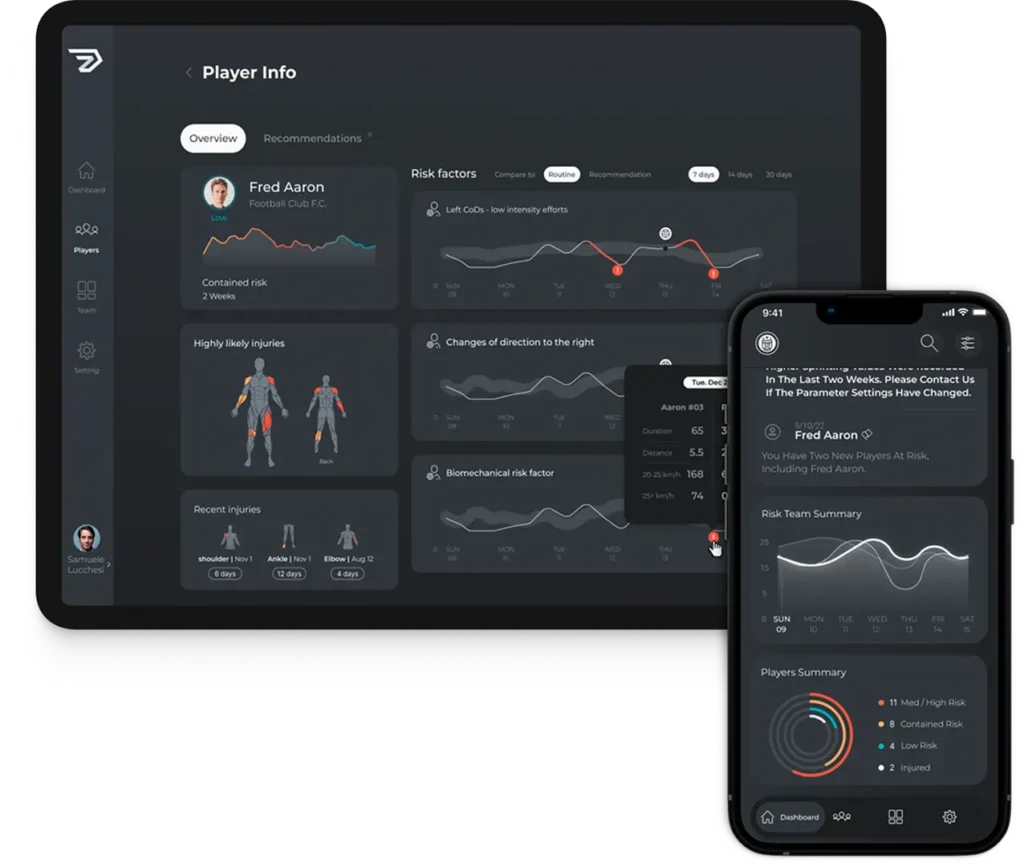
Zone7 decided to start its human-performance journey with pro sports because it’s relatively easy to obtain large amounts of data on players, including information about their health after games.
It’s harder to get that kind of “post-workout” data for fitness, although the proliferation of wearables over the last few years has been a positive evolution.
As fitness data becomes more plentiful, Zone7 could look to partner with companies, products or technologies in the fitness space that are looking to incorporate AI-generated advice into their experiences.
“We would be ideal for environments where folks are pursuing a specific goal,” Brown says. “It’s one thing if you’re just trying to be healthy or just trying to sleep better, but if you’re pursuing a goal, then you need to push yourself. We can help determine the optimal intensity ranges and timing of when and how to push yourself and when and by how much to pull back.”
In terms of AI’s ability to positively impact people in their health and fitness goals, Brown believes the fitness industry should focus on becoming “hyper-personalized.”
“The industry is evolving from generic advice like, ‘You should run less tomorrow’ or ‘You should get more sleep,’” Brown says. “The trend is towards more specific insights like, ‘We know you’re trying to run a 5K in under 25 minutes and your race is in three weeks. Here’s what the next two to three days could look like to help you get there safely.’”
That type of hyper-personalization is something basic tools like ChatGPT probably can’t help with, so it will take AI experts like Zone7, working in conjunction with human experts, like personal trainers, to come up with a solution.
“If you ask ChatGPT to suggest a three-month plan for a person to hit a 5k run in under 35 minutes, it’s probably going to come back really fast with a pretty good response,” Brown says. “But if you come to it and say, ‘I’m one month away from my 5k race, I just had this nag on my knee, and I haven’t been out there for several days, what should the next workout look like?’ Then it’s probably not going to do a great job.”
For those interested in a more in-depth discussion on the differences between AI experts like Zone7 and generative AI products like ChatGPT, Brown discusses that and more on the Zone7 Performance Podcast, available on Spotify and Apple.



